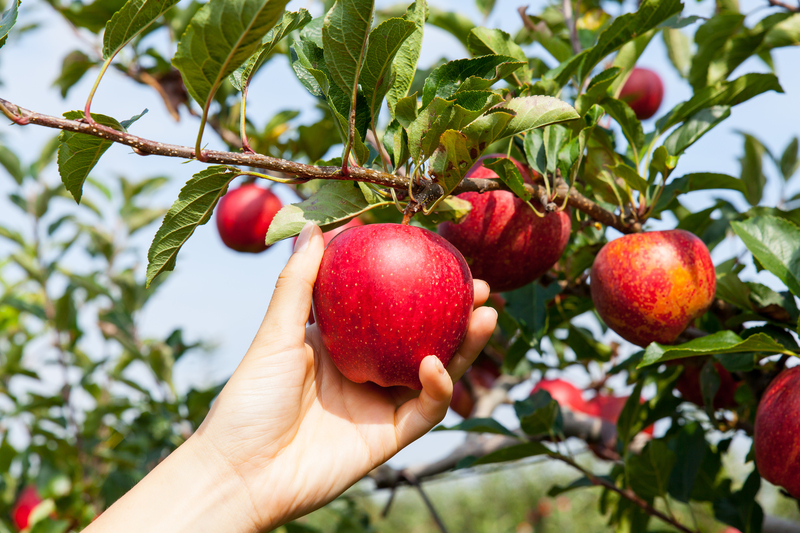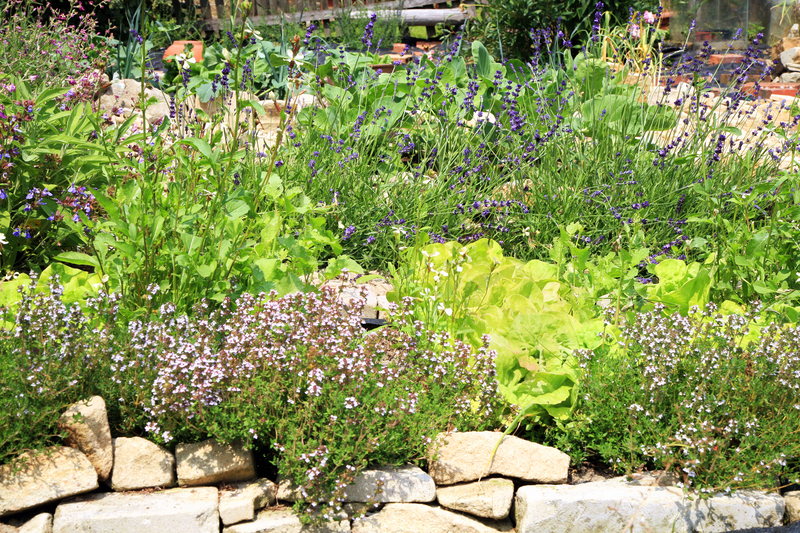How to Use Lawn Fertilizers Wisely During Summer Droughts
Lawn care during the hot, dry months of summer presents unique challenges, especially when it comes to fertilization. With rising temperatures and water restrictions, using lawn fertilizers wisely during summer droughts is critical for maintaining healthy, green turf without causing damage or wasting resources. This comprehensive guide covers practical tips, best practices, and science-backed advice for smart summer lawn fertilization during drought conditions.
Understanding the Impact of Drought on Lawns
Before discussing how to fertilize your lawn during summer droughts, it's important to understand how drought stress affects grass.
- Water scarcity: Lawns receive less moisture, leading to wilted, brown, or dormant grass.
- Higher soil temperatures: Soil heats up faster and retains less moisture, stressing turf roots.
- Reduced microbial activity: Soil organisms slow down, affecting nutrient cycling and uptake.
- Increased evaporation: Fertilizers are more likely to burn grass if not applied correctly.
During drought, lawns enter a natural state of dormancy to survive. Fertilizer use must adjust to these changing conditions to prevent unintentional harm and environmental pollution.

Why Fertilizer Management Matters in Summer Droughts
Fertilizer misuse during drought can result in:
- Root burn: Excess salts from fertilizer can dehydrate grass roots when water is limited.
- Environmental runoff: Heavy rain after a dry spell or overwatering can wash unused fertilizer into water systems.
- Wasted resources: Without enough water, lawns cannot absorb nutrients, making fertilization efforts ineffective and costly.
Proper lawn fertilizer use during droughts means adjusting your approach to ensure your lawn benefits from the nutrients without undue stress or harm.
What Happens When You Fertilize During Drought?
Fertilizing a lawn under drought stress can be risky. Grass requires water to absorb nutrients. When soil is dry, fertilizers can accumulate on the surface or in the thatch layer, leading to burning or leaching once rains return.
Unless water is available, the full benefit of fertilizing during extreme drought is often minimal or negative. Therefore, wise fertilizer management during summer water shortages is crucial.
Best Practices for Wise Lawn Fertilizer Use During Drought
1. Assess Your Lawn's Condition
Do not fertilize dormant lawns! If your grass has gone brown and crispy, it has likely entered dormancy to survive the drought. Fertilizing dormant grass does more harm than good because the grass cannot use the nutrients.
- Active growth: Fertilizing only makes sense if your lawn is still green and growing steadily.
- Dormant turf: Delay fertilization until rainfall resumes and the grass re-greens.
2. Choose the Right Fertilizer Type
The type of lawn fertilizer used during summer droughts plays a significant role in your results:
- Slow-release fertilizers: These are best for drought-stressed lawns as they provide nutrients gradually and lower the risk of burning.
- Avoid high-salt synthetic fertilizers: High concentrations of quick-release nitrogen can scorch your lawn in dry weather.
- Organic fertilizers: Compost or natural-based fertilizers are often gentler on stressed grass and improve soil quality over time.
3. Adjust Application Timing
Timing is essential to wise fertilizer use during summer water shortages.
- Early morning or evening: Apply fertilizer when temperatures are cooler to prevent volatilization and maximize absorption.
- Avoid midday heat: Don't fertilize under direct midday sun; this increases the risk of burning your lawn.
- Wait for rain or irrigation: If possible, apply fertilizer just before light rainfall or planned watering to help nutrients reach the roots.
4. Water-in Fertilizer Carefully
Watering in fertilizer is crucial to prevent grass burn and nutrient loss, but water conservation is key during drought.
- Light watering: Use just enough water to dissolve and carry fertilizer to the root zone.
- Drip irrigation or spot watering: These methods precisely target active growth areas without widespread water waste.
- Avoid heavy irrigation: Overwatering wastes resources and can wash fertilizer away, harming the environment.
5. Use the Minimum Necessary Amount of Fertilizer
Less is more when fertilizing lawns during drought. Over-application increases the risk of root burn and pollution.
- Follow label directions: Use the lowest recommended rate for your grass type and size.
- Spot fertilize: Treat only the areas that need help rather than the entire lawn.
6. Focus on Improving Soil Health
Healthy soil supports grass resilience during drought and makes more effective use of fertilizers. Long-term soil care pays off during stressful periods.
- Add organic matter: Top-dress with compost to promote microbial life and increase moisture retention.
- Reduce compaction: Aerate soil regularly to improve water and nutrient penetration.
- Test soil regularly: Identify nutrient deficiencies before applying fertilizer.
Smart Fertilizing Strategies During Drought Conditions
Switch to Drought-Tolerant Grasses
If you live in regions with frequent summer droughts, consider overseeding with drought-resistant grass varieties, such as Bermuda, buffalo, or tall fescue. These grasses require less water and fertilizer, thriving in tough conditions.
Mulch, Don't Bag Lawn Clippings
Grass clippings left on the lawn act as a natural, gentle fertilizer, returning nitrogen and moisture to the soil. Mulching blades on your mower can help finely chop clippings for fast decomposition--an eco-friendly, cost-effective fertilizer alternative during droughts.
Limit Traffic and Mowing
Drought-stressed lawns are more susceptible to damage from foot traffic and mowing. Keep off brown, dormant grass as much as possible and raise your mower blades to reduce stress on the grass plants.
Spot-Treat Problem Areas
Instead of blanket fertilizing, use targeted approaches for sections of your lawn that remain green and slightly active during dry spells. This ensures the resources are used where they're needed most.
Common Mistakes to Avoid When Fertilizing Lawns During Drought
- Fertilizing dormant lawns: Fertilizer is ineffective and may cause future harm when rain returns in bulk.
- Using high-nitrogen, quick-release products: These can burn your lawn and lead to rapid nutrient loss.
- Over-applying fertilizer: More is not better during drought; over-application only increases risk.
- Forgetting soil health: Focusing only on synthetic fertilizers and ignoring soil improvement results in lesser drought resilience.
Alternative Lawn Fertilization Techniques During Drought
Liquid Foliar Sprays
Liquid foliar fertilizers can be lightly sprayed on green, non-dormant grass for quick nutrient absorption. These are often more gentle and can be applied at reduced rates to avoid stress.
Compost Tea or Microbial Boosters
Compost tea or bioactive soil conditioners can help rejuvenate soil life and bolster drought-damaged turf without the risks of salt buildup. They support natural nutrient cycling and soil structure.
Organic Lawn Fertilizers
Natural-based fertilizers release nutrients slowly and help prevent the "feast-or-famine" cycles common with synthetics during drought.
Environmental Considerations During Drought Fertilization
Lawn fertilizer runoff during periods of drought followed by sudden rainfall is a major environmental concern. Nutrients can quickly travel into waterways, causing harmful algal blooms and water pollution. Wise fertilizer use--especially choosing the right time, type, and amount--is critical for minimizing environmental impacts.
Follow these guidelines to protect your lawn and the environment:
- Never fertilize before heavy rain is forecasted.
- Keep fertilizer away from hard surfaces like sidewalks or driveways.
- Use buffer zones: Avoid fertilizing within a few feet of bodies of water, storm drains, or drainage ditches.
- Sweep excess granules back into the lawn after application.
Frequently Asked Questions About Fertilizing Lawns During Summer Drought
Should I fertilize my lawn during a drought?
Generally, it's best to postpone fertilizer applications until drought conditions improve and your grass resumes normal growth. Applying fertilizer to dormant grass can cause root damage and pollution with little growth benefit.
What is the safest fertilizer to use during summer drought?
Slow-release organic or natural fertilizers are the safest for drought conditions. They minimize the risk of root burn, feed beneficial soil microbes, and release nutrients gradually.
How much water is needed when fertilizing during drought?
Use just enough water to move fertilizer into the soil--typically 1/4 inch of irrigation or rainfall. Avoid saturating the soil, which may cause runoff. Spot watering works well for small areas.
What if drought ends after I've fertilized--is there a risk?
If drought suddenly ends with heavy rainfall, nutrients from recent fertilizer applications can leach away rapidly, leading to environmental harm. This is why timing and moderation in application are so important.

Summary: The Keys to Wise Lawn Fertilizer Use in Summer Droughts
Smart lawn fertilization during drought boils down to understanding your grass, adjusting your approach, and always prioritizing soil health and environmental safety.
- Delay fertilization of dormant lawns until after drought ends.
- Choose slow-release or organic fertilizers.
- Apply only the minimum necessary amount.
- Spot-treat active areas, not the entire lawn.
- Follow up with careful, limited irrigation.
- Focus on long-term soil improvement strategies.
By following these best practices, you can help your lawn weather summer droughts, save resources, and contribute to local environmental health.
Final Thoughts: Sustainable Lawn Care Practices Year-Round
Lawn care is a long-term investment, and smart fertilizer use during drought is only one piece of the puzzle. By adapting your fertilization habits to changing weather patterns, embracing organic and slow-release products, and maintaining healthy soil, you can enjoy a resilient, sustainable lawn in every season--even under the toughest summer droughts.
Remember: When in doubt, consult with your local Cooperative Extension office for region-specific advice on fertilizing lawns during summer drought and water restrictions. Every lawn is different, and wise management makes all the difference!